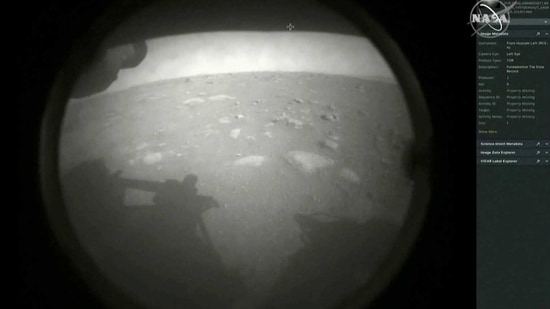NASA nails historic Mars landing in hunt for ancient life
Mars landings are among the toughest challenges in space exploration, and Perseverance’s arrival in Jezero Crater was the trickiest NASA has ever attempted.
NASA successfully landed its largest and most sophisticated science rover on Mars, as the spacecraft Perseverance touched down in an ancient river delta that may contain signs of whether the planet ever harbored microbial life.

Cheers erupted at NASA’s Jet Propulsion Laboratory in Pasadena, California, which oversees the agency’s rover fleet, when flight controllers received a signal Thursday at about 3:55 p.m. Eastern time that the rover had landed. Perseverance had traveled 292 million miles (470 million kilometers) since launching July 30 from Cape Canaveral, Florida.
“When we put our arms together and our hands together and our brains together, we can succeed,” said Rob Manning, chief engineer at the Jet Propulsion Laboratory.
Mars landings are among the toughest challenges in space exploration, and Perseverance’s arrival in Jezero Crater was the trickiest NASA has ever attempted. Strewn with boulders and featuring sand dunes and cliffs as high as 300 feet (about 90 meters), the 28-mile-wide crater had been rejected for previous missions. NASA targeted it after advances in terrain-navigation technology enabled the craft to alter its flight path autonomously.
Also Read: Meet Dr Swati Mohan, Indian American leading NASA's Perseverance Rover Landing on Mars
Perseverance landed inside a spherical 4-by-5 mile zone that NASA had selected within the crater, about a mile southeast of the agency’s specific target, said Al Chen, head of the rover’s entry, descent and landing team. The vehicle flew autonomously in the final phase of its descent, scanning the terrain for the safest landing spot. Its current location is flat and the rover is tilted only 1.2 degrees, sitting near a sand dune.
“It never gets old landing on Mars,” Chen said at a news conference. “We found the parking lot and hit it.”
The $2.7 billion rover also carries a drone helicopter known as Ingenuity with 4-foot rotors, which will be the first craft to attempt to fly on another planet. The successful landing means the aircraft could fly as soon as next month, depending on how scientists assess different locations for a flight.
NASA Acting Administrator Steve Jurczyk said President Joe Biden called after the landing and said, “Congratulations, man!” Biden also plans to meet with the Perseverance team in person, as soon as next week.
This is the fifth time since 1997 that the National Aeronautics and Space Administration has attempted a landing on the Martian surface, a daunting task of physics and engineering that comes with a dismal record: More than half of previous efforts have failed in 50 years of attempts. The former Soviet Union is the only other country that has successfully placed a spacecraft on Mars.
“This is one of the most difficult maneuvers we make in the space business,” Matt Wallace, deputy project manager of NASA’s Mars 2020 mission, told reporters on Wednesday.
Hitting the Martian atmosphere at 12,000 miles per hour, the spacecraft rapidly decelerated to land at about 2 mph, a flight phase of extreme heating and dynamic forces that rocket scientists call “seven minutes of terror.” Wallace likened the intricate process to “a controlled disassembly” of the craft to safely disgorge the rover onto the surface.
The mission was complicated by the Covid-19 pandemic both before the launch and during the seven-month flight as safety protocols disrupted NASA’s normal work groups and other routines.
Perseverance joins two other NASA missions exploring Mars. The Curiosity rover arrived in mid-2012, and the stationary InSight lander began exploring the planet’s geology in November 2018.
The 10-foot long Perseverance has nearly the same dimensions as Curiosity, but weighs 278 pounds (126 kilograms) more because of a roughly 50% increase in science payload. Perseverance’s total weight is about 2,260 pounds, and the rover is expected to operate for at least two years.
One key task for Perseverance will be collecting rock and other geologic materials for a future NASA collection mission -- possibly in the early 2030s -- to return those materials to Earth for study. In October, a NASA probe collected samples from an asteroid, Bennu, that is more than 200 million miles from Earth for a return flight.
Among Perseverance’s new features: more cameras and a microphone to record the sounds of descent and landing. NASA expects to have a “front-row seat” view from three high-definition video cameras and audio of the descent and landing, said Jennifer Trosper, deputy project manager.
The first still-image from the descent will be available on Friday and video should be released on Monday.
“We think we have captured some pretty spectacular video,” Wallace said.



